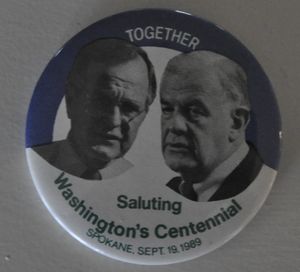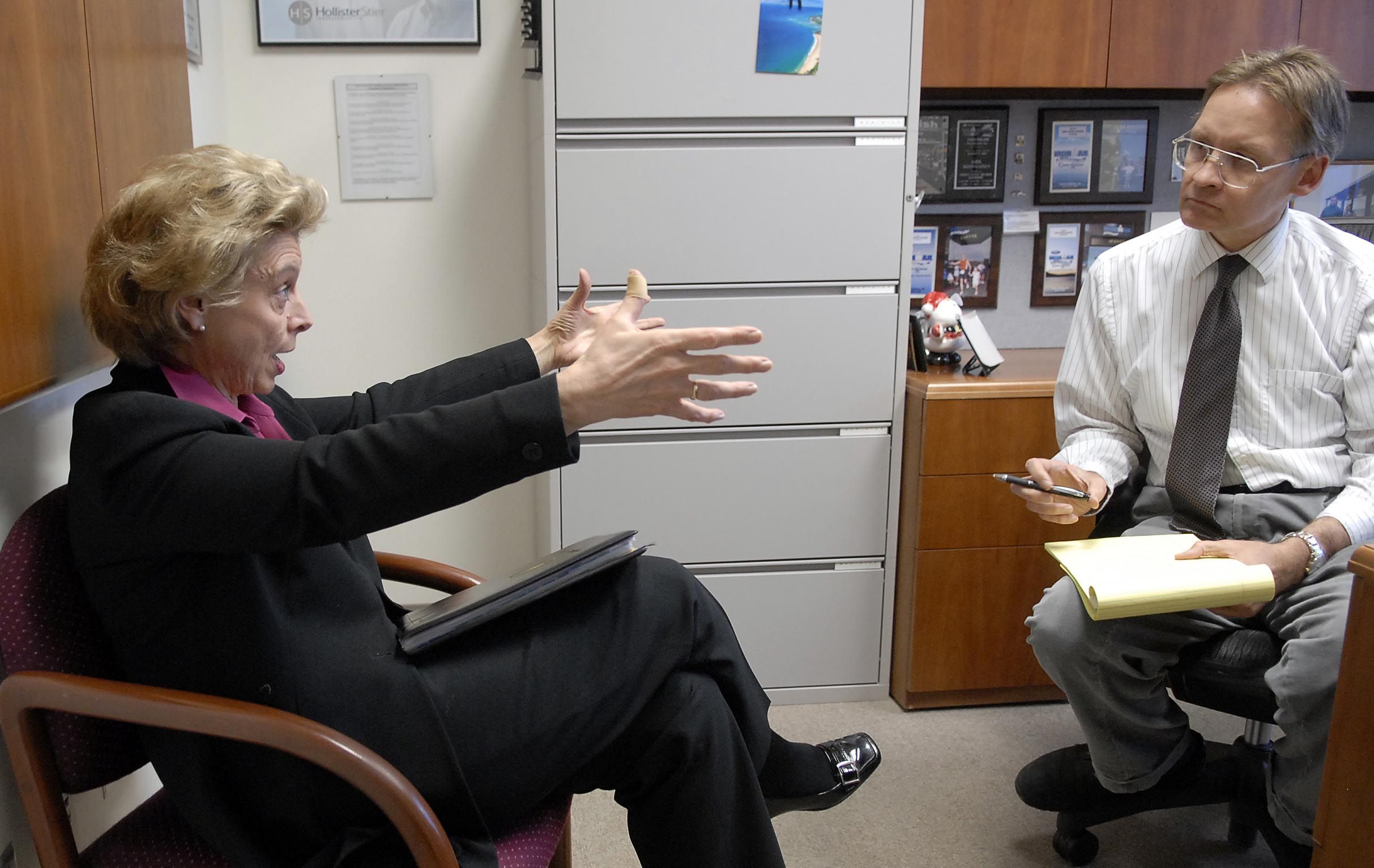Sunday Spin: A Foley debt showdown hard to imagine
It's probably just a coincidence that Tom Foley passed away slightly more than a day after the Congress he loved and served so well managed to end the partial government shutdown and spare the nation the ignominy of default.
He'd been sick for months and on hospice care, and his remaining time was being measured in days not months, his wife Heather had said the previous week. Still, the not so practical part of my brain likes to think the former speaker held on just long enough to make sure the House passed a bipartisan bill to do what most folks thought they needed to do all along.
One of Foley's great maxims was that in Congress, the perfect is often the enemy of the good. . .
. . . or even the attainable. If ever there was a sterling example of that, it was the recent quest of some Republicans to tie their idea of perfect legislation, the repeal of Obamacare, to a budget extension. That zeal for repeal was enough to block for 17 days the passage of what is generally regarded as good, and almost always attainable, agreeing to spend money to keep the government operating.
There’s a worthwhile debate on how much money is enough, what to spend it on and whether it should be borrowed. But the last few weeks have proved that’s not a debate best held with cable news displaying ticking clocks counting up from the shutdown and down to default.
Members of both parties who served with Foley, and the Republican who replaced him in the House, agreed late last week this is not a crisis the former speaker would have allowed to be manufactured under his watch.
“He believed you’ve got to keep the government running,” said former Rep. Norm Dicks, a Bremerton Democrat who served for decades with Foley. He knew that members didn’t like to take that vote – raising the debt doesn’t play well back home – but he also knew it was something that has to be done, Dicks said.
Foley worked with President Ronald Reagan at one point when the nation was approaching the debt ceiling, former Rep. Sid Morrison, a Zillah Republican, recalled. Quiet negotiations, no dust-ups and the bill passed. “It was a non-event,” Morrison said.
Foley was a person who had many opponents but no enemies over his 30-year career, said Republican Slade Gorton, who served two terms in the Senate with Foley in House leadership. He wouldn't have been as adamant as John Boehner and George H.W. Bush wouldn't have been as adamant as Barack Obama. "They would've met together and settled it," Gorton said.
George Nethercutt, who beat Foley in 1994 but held great respect for him as a legislator and public servant, said Foley came from an era when members of Congress would disagree but each side would emerge with something.
“It wasn’t ‘I get everything and you get nothing.’ The attitude today is, it’s a zero-sum game,” Nethercutt said. “People aren’t talking to each other; they hate each other.”
It’s common for politicians who have served long to remember their halcyon days as having more sunshine, bonhomie and comity. In the ‘90s, after all, Foley sometimes talked of the ‘60s in Congress with a certain rose-colored reverence. But even junior members of Congress shake their heads at the current rancor.
Gorton also said that during much of the time he and Foley were in Congress, columnists and political scientist complained that there wasn't enough difference between the parties, and members didn't stand for something. "You should be careful what you pray for," Gorton said.
Foley’s oft-mentioned bipartisanship may have been born of a political reality that most current members don’t face. He was a Democrat in a district that got more Republican, or at least more conservative, the longer he served it. That was obscured by some of his re-elections when the GOP practically went begging for a challenger, but anyone looking at the presidential or gubernatorial results could do the math.
Many current members are in safe districts, some drawn to divide a state into havens for both parties, others outright gerrymandered to give one party the upper hand. They don’t have to be bipartisan, they have to watch for a primary challenge from a faction in their own party.
One other Foley maxim was that the nation has 535 members of Congress, but only one president and between elections it was necessary to remember that. He once gave a toast to Ronald Reagan at a White House gathering for bringing the nation together. On my desk last week was an “apolitical” button with pictures of him and George H.W. Bush that reads “Together Saluting Washington’s Centennial. Spokane Sept. 19, 1989.”
Shortly after becoming speaker, Foley invited Bush Senior to Spokane, where they talked regional issues over dinner at a Browne’s Addition eatery and planted a sapling from the White House elm in a Riverfront Park full of school kids.
Try to imagine for a minute Bill Clinton planting a tree in Atlanta with Newt Gingrich, George W. Bush appearing in San Francisco with Nancy Pelosi or Barack Obama going to Dayton for a big public event with John Boehner.
Bet you can’t imagine such a thing. And Tom Foley would probably tell you that’s a shame.

